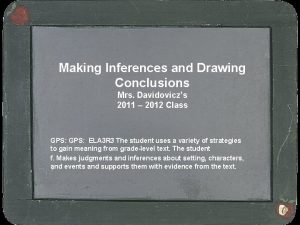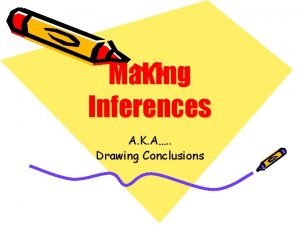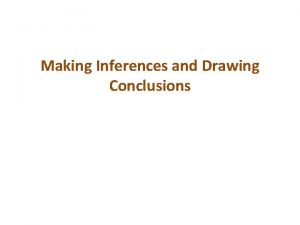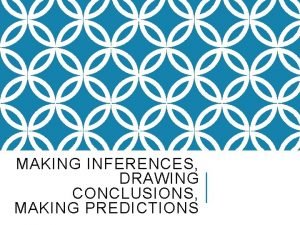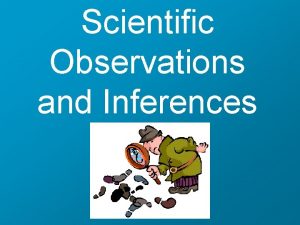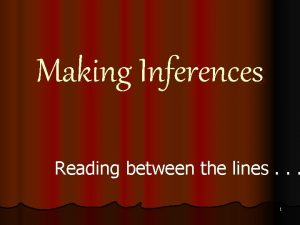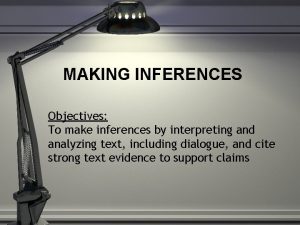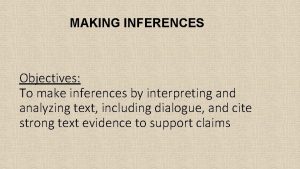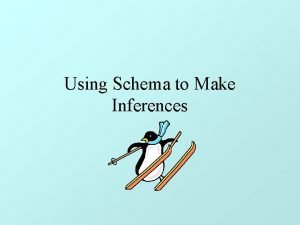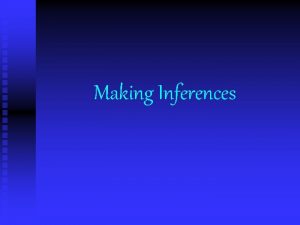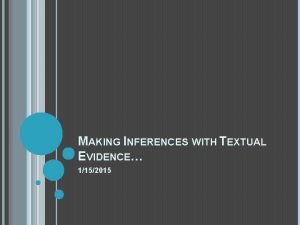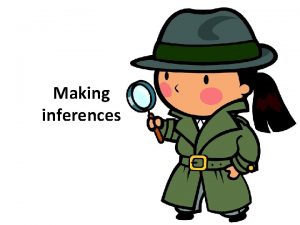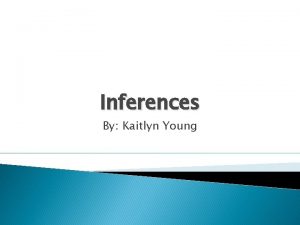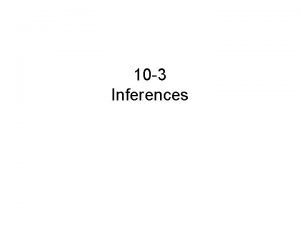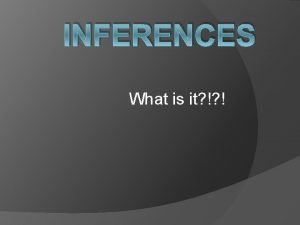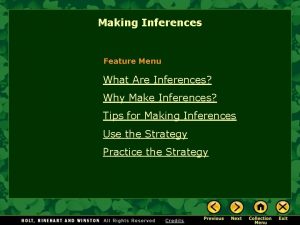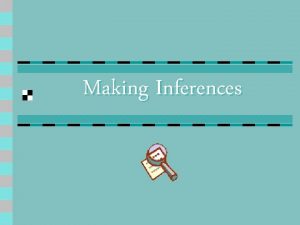Indicators and Making Inferences from Indicators Prof Richard














- Slides: 14

Indicators and Making Inferences from Indicators Prof Richard Lilford, University of Warwick UN-Habitat Sustainable Development Goals Technical Meeting, Lake Naivasha February 2017

Example: Water and Sanitation Indicators SDG 45 “Percentage of population using safely managed water services by urban/rural. ” SDG 46 “Percentage of population using safely managed sanitation services by urban/rural. ”

Issues with Indicators 1. Selection of Indicators. 2. Measurement of indicator: – Numerator. – Denominator. 3. Use of indicator – making inferences.

Selection of Indicators Policy Improve water & sanitation (SDG 45 & 46) Enablers Processes Finance & contracting & community engagement Intermediate variable Water & sewage installations of a certain type SDG indicators Levels of faecal contamination Outcome Diarrhoea, death & wellbeing

Issues with Indicators 1. Selection of Indicators. 2. Measurement of indicator: – Numerator. – Denominator. 3. Use of indicator – making inferences.

Measurement of Indicator 1. Numerator, e. g. “safely manage sewage services. ” – Type of installation. – Coverage. – Hygiene / usage aspects. Census and household surveys – Maintenance. 2. Denominator (urban, schools, slums). See also Methodological note on monitoring WASH and wastewater for the SDGs. https: //www. wssinfo. org/fileadmin/user_upload/resources/Methodological-note-on-monitoring-SDGtargets-for-WASH-and-wastewater_WHO-UNICEF_8 October 2015_Final. pdf

The Case for Slum Health Neighbourhood effects Ezeh, et al. Lancet. 2016. Lilford, et al. Lancet. 2016. Photo from Kibera. org. uk

Neighbourhood Effects Type of neighbourhood effect Example from slum context Physical environment Muslim mortality paradox. Contaminated environment. [Geruso & Spears. 2014. ] [Bain, et al. 2014. ] Social interactions Moving to Opportunity experiment. [Chetty, et al. 2016. ] Variable crime rates / cultures. Geographic factors Poor people in rich cities have better health than poor people Shared geographic hazards. [Landrigan, et al. 2015. ] in poor cities. [Chetty, et al. 2016. ] Institutional factors Teacher expectations and poor Stigmatised residents. neighbourhoods. [shiree-DSK. 2012. ] [Galster. 2012. ] [UN-HABITAT. 2003. ]

The Health of People in Slums: Child Mortality (under 5) Slums Rural Poor All Urban Bangladesh 2006/07 81 77 86 63 Bangladesh 2013/14 57 49 64 37 Nairobi 2000 151 117 144 93 Nairobi 2012/13 80 56 53 57 Data from Urban Health Survey 2006 and 2013; Nairobi data from Nairobi Cross-sectional Slum Survey 2000 and 2012; and Demographic Health Surveys. See also Cutler D & Miller G. The Role of Public Health Improvements in Health Advances: The 20 th Century United States. 2004.

Issues with Indicators 1. Selection of Indicators. 2. Measurement of indicator: – Numerator. – Denominator. 3. Use of indicator – making inferences.

Use of Indicator: Inferences Brown, et al. Qual Saf Health Care. 2008; 17: 158 -62. Brown, et al. Qual Saf Health Care. 2008; 17: 162 -9. Brown, et al. Qual Saf Health Care. 2008; 17: 170 -7. Brown, et al. Qual Saf Health Care. 2008; 17: 178 -81. Chen, et al. BMJ Qual Saf. 2016; 25: 303 -10.

Hemming, et al. BMJ. 2015; 350: h 391. Hemming, Lilford & Girling. Stat Med. 2015; 34(2): 181 -96.

Connecting Research & Action: The Role of Models Theoretical Model Data Support for Model

Conclusion Careless measurement and casual inference is worse than no measurement at all.
 Making inferences and predictions
Making inferences and predictions Drawing conclusions and making inferences powerpoint
Drawing conclusions and making inferences powerpoint Drawing inferences examples
Drawing inferences examples When drawing conclusions, make sure you
When drawing conclusions, make sure you Making inferences drawing conclusions
Making inferences drawing conclusions Making inferences in science
Making inferences in science Making inferences reading between the lines
Making inferences reading between the lines Making inferences objectives
Making inferences objectives By making inferences based on analysis of a character
By making inferences based on analysis of a character Making inferences in reading
Making inferences in reading Making inferences examples
Making inferences examples What is inference
What is inference Making inferences powerpoint
Making inferences powerpoint Making inferences objectives
Making inferences objectives Essential questions for inferencing
Essential questions for inferencing

